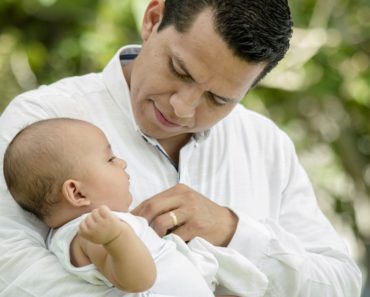Contents
- 1 Stuck in a Tangle of Need: Can a Codependent Relationship be Saved?
- 2 Understanding Codependent Relationships
- 2.1 Signs of a codependent relationship
- 2.2 Can a codependent relationship be saved through individual therapy and couples counseling?
- 2.3 What are some effective strategies for breaking the cycle of codependency in a relationship?
- 2.4 How can people in a codependent relationship develop healthier boundaries and regain their sense of self?
- 2.5 Related Posts

You may be wondering, can a codependent relationship be saved? Codependent relationships can feel like a tangled web – one partner selflessly giving, the other seemingly unable to stand on their own. But within this complexity lies the potential for transformation. This article explores the depths of codependency and asks the crucial question: can these relationships really be saved?
Stuck in a Tangle of Need: Can a Codependent Relationship be Saved?
Think of a relationship in which love feels suffocating, in which your sense of self gets blurred with your partner’s. That’s the reality of codependency – a dynamic where we become overly reliant on our partner for emotional support, like a flower desperately clinging to a trellis for survival. This constant need can wreak havoc on our mental well-being, leaving us feeling anxious, lost, and with shaky self-esteem.
But hold on, there’s a glimmer of hope! Understanding the mental health aspects of codependency might be the key to untangling this mess. You see, both partners might be carrying baggage – low self-esteem, unresolved trauma, or constant anxieties – that fuel this unhealthy pattern.
Individual therapy helps each partner explore their inner world, understand their triggers, and build a stronger sense of self. Couples therapy, on the other hand, a safe space to learn healthy communication, set boundaries (think invisible fences to protect each other’s well-being!), and create a more balanced partnership – one of interdependence, not codependency.
The truth is, not every codependent relationship can be saved. Some might be downright abusive, leaving us feeling emotionally drained and unsafe. In those situations, prioritizing our mental health is paramount. Reaching out to friends, family, or a therapist can be a lifeline, offering guidance and support through tough decisions.
Saving a codependent relationship involves recognizing the issues and actively working towards healthier dynamics. Here are some considerations:
1. Willingness to change: Both individuals must acknowledge the codependency and be open to personal growth and change.
2. Seek therapy: Professional help, such as couples therapy or individual counseling, can provide guidance, support, and tools to address underlying issues and develop healthy coping mechanisms.
3. Establish boundaries: Setting clear boundaries and focusing on personal growth can break the cycle of codependency and encourage a healthier relationship dynamic.
4. Self-care: Prioritizing self-care and individual well-being is crucial for building resilience and reducing dependency on the other person.
So, the question of “can a codependent relationship be saved?” doesn’t have a simple answer. But by acknowledging the mental health aspect and taking steps towards healing, there’s a chance for both partners to blossom – not just as a couple, but also as individuals. Remember, prioritizing your well-being is never selfish, it’s the foundation for a healthier, happier you, and potentially, a healthier relationship.
Understanding Codependent Relationships

Codependent relationships are characterized by a dysfunctional pattern in which one person excessively relies on the other for emotional or psychological needs, while the other person derives self-worth from taking care of the dependent individual. These relationships often involve enabling destructive behaviors and can lead to emotional distress, anxiety, and depression for both individuals involved.
Signs of a codependent relationship
Recognizing the signs of a codependent relationship is crucial for determining whether it can be saved or requires intervention. Let’s dive into some common indicators:
1. Excessive need for approval: One or both individuals constantly seek validation and become emotionally dependent on the other’s approval.
2. Lack of boundaries: Personal boundaries are blurred or nonexistent, leading to a loss of individuality and dependency on the other person.
3. Enabling behavior: One person enables the other’s self-destructive habits, such as substance abuse or irresponsibility, perpetuating a cycle of dysfunction.
4. Low self-esteem: Both individuals may struggle with low self-worth and seek validation from each other, reinforcing the codependency.
Can a codependent relationship be saved through individual therapy and couples counseling?
Individual therapy and couples counseling can be helpful in addressing codependent relationships.
In individual therapy, the person with codependency can explore the underlying issues that contribute to their codependent behavior, such as low self-esteem or a history of trauma. They can gain insight into their own needs and learn healthier ways of relating to others.
Couples counseling can provide a safe space for both partners to express their feelings and concerns. The therapist can help them develop better communication skills, set boundaries, and work towards establishing a more balanced relationship.
However, it is important to note that saving a codependent relationship requires the willingness of both partners to work on themselves and the relationship. Each person should be committed to personal growth and change.
Individual therapy and couples counseling can provide valuable tools and strategies, but ultimately, the success of saving a codependent relationship depends on the individuals involved and their dedication to the process of healing and growth.
What are some effective strategies for breaking the cycle of codependency in a relationship?
Breaking the cycle of codependency in a relationship can be challenging, but there are several effective strategies that can help. Here are some key steps to consider:
1. Recognize and acknowledge the codependent patterns: The first step is to become aware of the codependent behaviors and dynamics present in the relationship. This involves recognizing unhealthy patterns, such as excessive caretaking, low self-esteem, and an inability to set boundaries.
2. Focus on self-care and personal growth: Codependent individuals often have a tendency to prioritize the needs of others over their own. It is crucial to prioritize self-care and well-being. Engage in activities that bring you joy, cultivate self-esteem, and promote personal growth. This may include therapy, exercise, hobbies, or spending time with supportive friends and family.
3. Set and maintain boundaries: Establishing clear and healthy boundaries is essential in breaking the cycle of codependency. Learn to identify your limits, communicate them assertively, and adhere to them consistently. It is important to recognize that having boundaries is not selfish; it is an act of self-care and self-respect.
4. Develop a support network: Building a network of supportive individuals can provide encouragement and assistance during the process of breaking codependent patterns. Seek out friends, family members, or support groups who understand and validate your experiences. Sharing your struggles and successes with others who have undergone similar journeys can be incredibly empowering.
5. Seek professional help: Consider working with a therapist or counselor who specializes in codependency and relationships. They can provide guidance, offer validation, and help you develop healthier coping strategies. A mental health professional can also assist in unraveling any underlying issues contributing to the codependent behaviors.
6. Practice self-reflection and self-awareness: Regularly examine your thoughts, emotions, and behaviors in order to gain a deeper understanding of yourself. Journaling, meditation, and mindfulness exercises can be useful tools for self-reflection. By developing self-awareness, you can identify any codependent tendencies and consciously choose healthier responses.
7. Learn to assertively express your needs and desires: Instead of relying on people-pleasing or sacrificing your own needs to maintain the relationship, practice expressing your own wants and desires assertively. This helps break the cycle of relying solely on others for validation and fulfillment.
Breaking the cycle of codependency takes time and effort, but with consistent practice and support, it is possible to develop healthier relationship patterns and regain a sense of personal autonomy. Remember, seeking professional help is always beneficial, as they can provide personalized guidance tailored to your specific needs.
How can people in a codependent relationship develop healthier boundaries and regain their sense of self?
In a codependent relationship, it is important for people to develop healthier boundaries and regain their sense of self. This can be a challenging process, but it is essential for personal growth and mental well-being.
1. Recognize the codependent patterns: The first step is to acknowledge and understand the codependent patterns within the relationship. This involves recognizing behaviors such as excessive caretaking, people-pleasing, and a lack of personal boundaries.
2. Establish clear boundaries: Setting clear boundaries is crucial in breaking the codependent cycle. Clearly communicate your needs, wants, and limits to your partner. Be assertive and firm in maintaining these boundaries.
3. Practice self-care: Prioritize self-care activities that promote your physical, emotional, and mental well-being. Take time for yourself, engage in hobbies, practice mindfulness or meditation, and prioritize activities that bring you joy and fulfillment.
4. Seek therapy or support groups: Consider seeking professional therapy or joining support groups specialized in codependency. These resources can provide guidance, validate your experiences, and offer tools to develop healthier coping mechanisms.
5. Build an independent identity: Focus on developing your own interests, passions, and goals outside of the relationship. Rediscover your sense of self by exploring new activities, pursuing education or career goals, and forming connections with friends and family.
6. Challenge codependent behaviors: Becoming aware of codependent behaviors and actively challenging them is crucial. This may involve practicing self-reflection, examining underlying beliefs and fears, and replacing unhealthy patterns with healthier alternatives.
7. Set realistic expectations: Understand that change takes time and effort. Be patient with yourself and your progress. Celebrate small victories along the way and acknowledge that setbacks are a normal part of the journey.
Remember, developing healthier boundaries and regaining your sense of self is a process that requires effort, self-reflection, and support. By taking these steps, people in codependent relationships can work towards healthier, more fulfilling lives.







